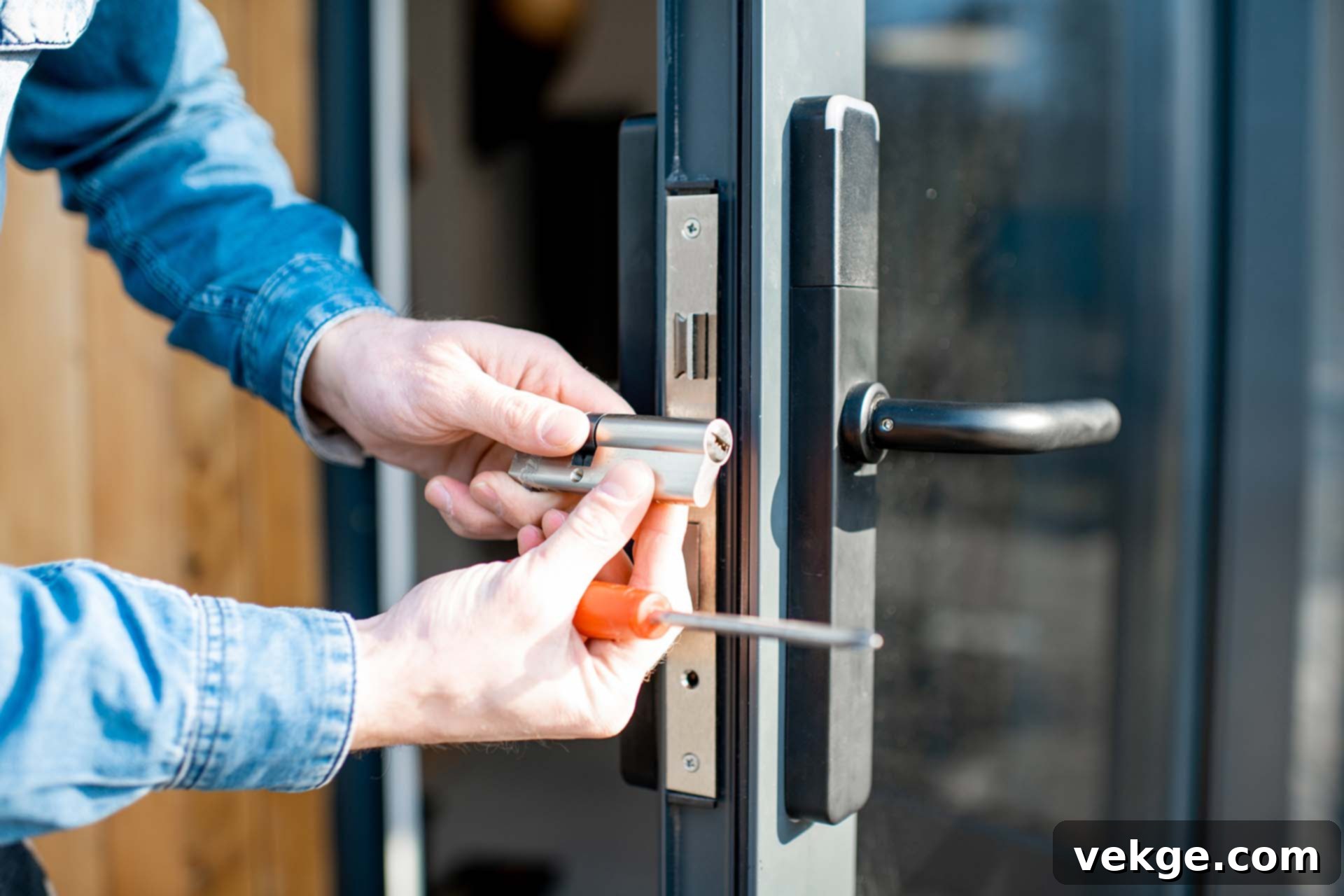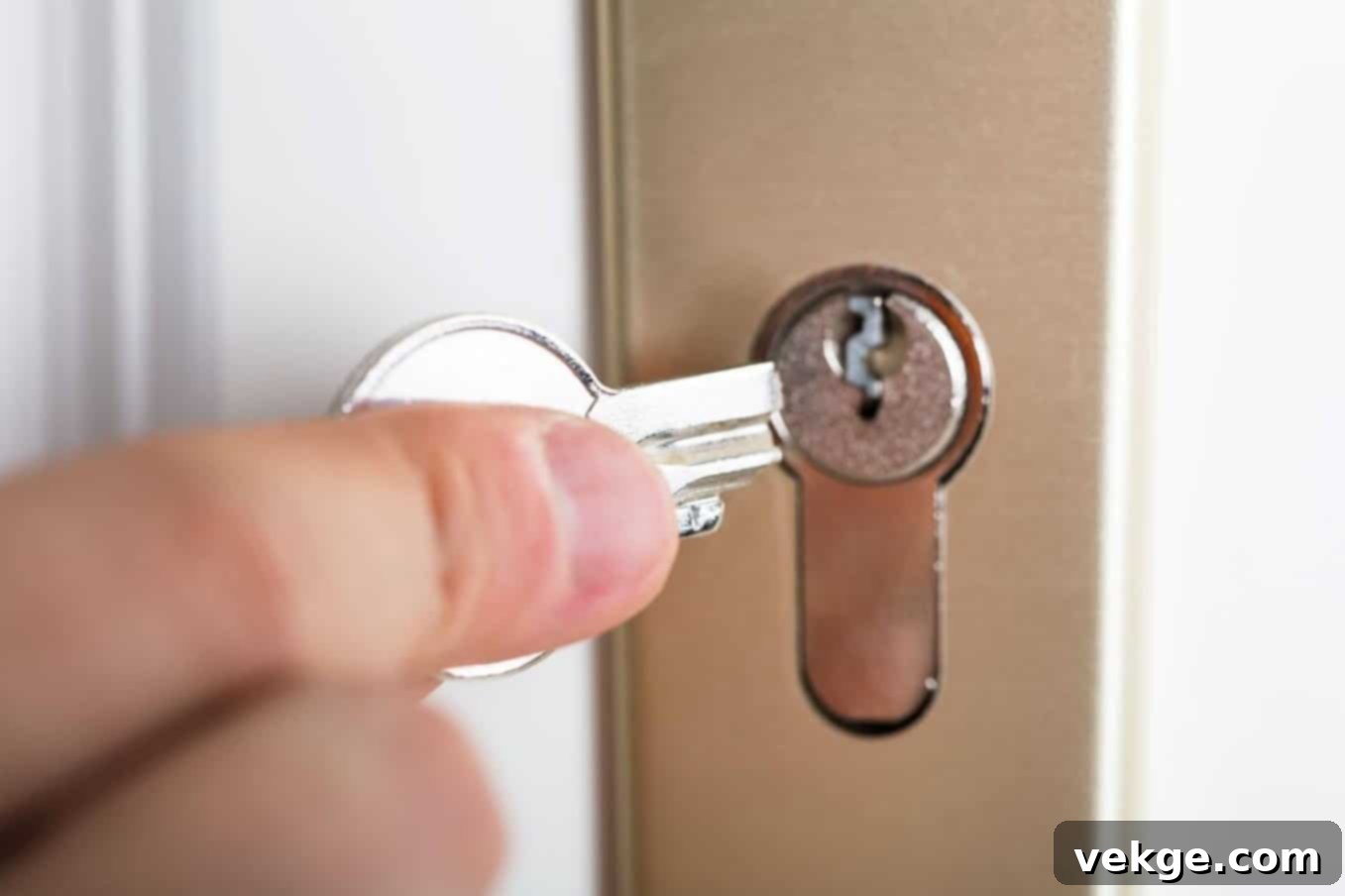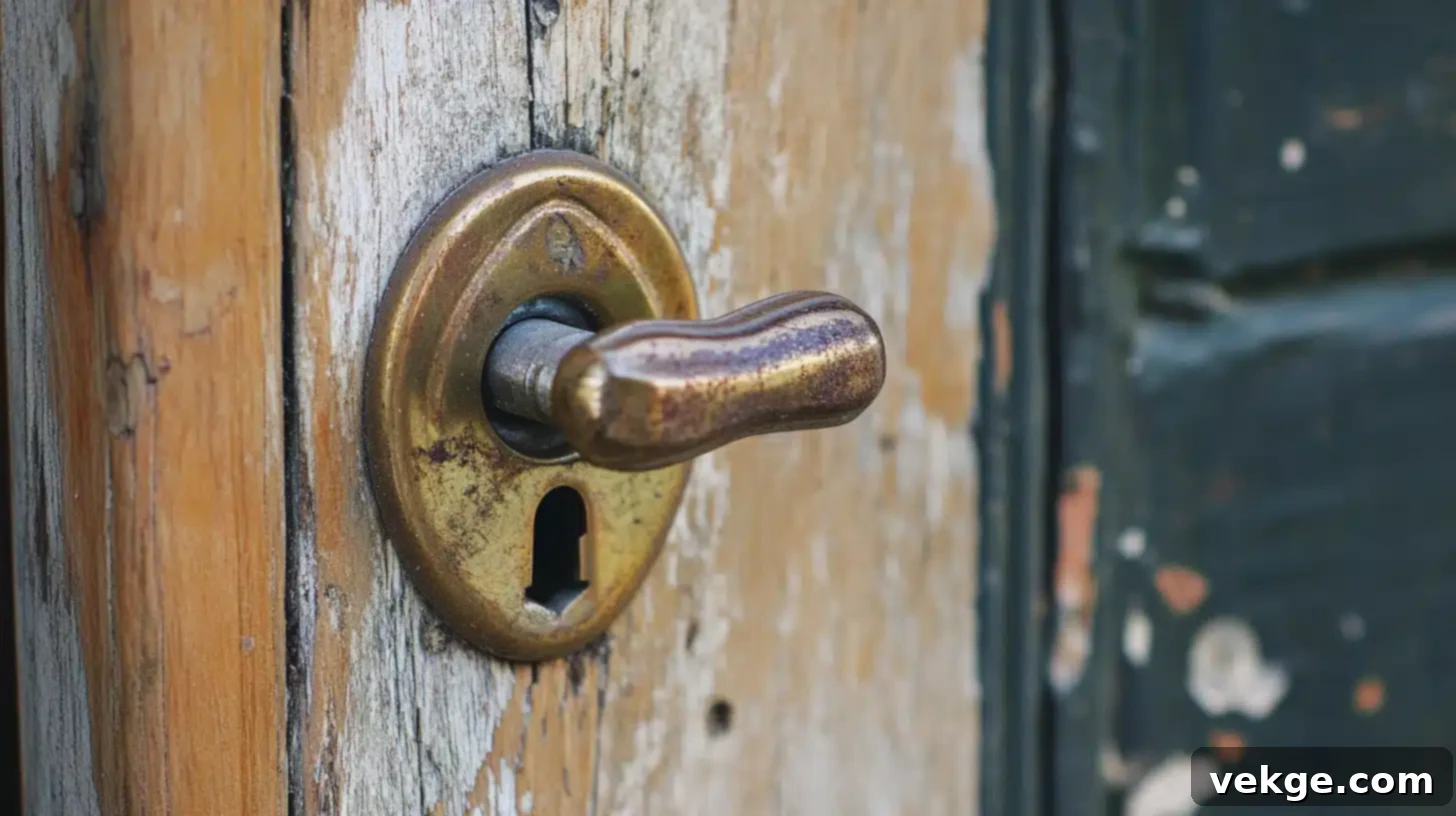Comprehensive Guide to Lock Repair: Fixing Damaged Locks and Broken Keys for Enhanced Home Security
Dealing with damaged locks and managing broken keys are common frustrations that many homeowners and property managers encounter. You are certainly not alone if you’ve faced the inconvenience of a stubborn lock or a key that unexpectedly snaps off. These challenges, often more frequent than one might imagine, can disrupt your day and compromise your sense of security. Understanding the root causes and knowing how to address them effectively can save you valuable time, money, and unnecessary stress.
This comprehensive guide is designed to empower you with practical advice for repairing damaged locks and replacing broken keys. By equipping yourself with this knowledge, you’ll be better prepared to confidently handle these common security issues the next time they arise, ensuring your property remains secure and accessible.
Identifying the Problem with Damaged Locks: A First Step Towards Repair

Before you can effectively tackle any lock problem, the crucial first step is to accurately identify what’s wrong. A damaged lock can manifest in various ways, ranging from subtle annoyances to complete operational failure. Pay close attention to how your lock behaves. Does your key turn smoothly, or does it require excessive force? Has the lock become increasingly difficult to operate over time? Perhaps the door no longer closes securely because the lock mechanism doesn’t properly align with the strike plate.
Common Issues Affecting Damaged Locks
Understanding these everyday issues will help you diagnose problems more accurately, leading to more effective and targeted repairs:
- Key Won’t Turn or Is Stiff: This is a common complaint. It could be indicative of internal components that are either misaligned, worn out, or obstructed by accumulated dirt and debris. Sometimes, the key itself might be bent or damaged, making it difficult to engage the lock’s tumblers.
- Lock Cylinder is Loose: If the entire lock cylinder wobbles or spins when you insert the key, it typically suggests that the retaining screws are loose or that internal wear has occurred. A loose cylinder can significantly compromise the security of your door, making it easier for intruders to tamper with.
- Rust and Corrosion: Locks exposed to external elements, especially moisture, can suffer from rust and corrosion. This build-up of oxidation can make the lock mechanism stiff, difficult to turn, or even entirely seize up, rendering the lock inoperable.
- Misalignment Between Lock and Strike Plate: Over time, doors can settle, warp, or hinges can become loose, leading to a shift in the alignment of the door. This can cause the lock’s bolt or latch to no longer properly engage with the strike plate on the door frame, preventing the door from closing and locking securely.
- Key Gets Stuck or Is Hard to Remove: This often points to issues with the lock’s internal pins or springs, or a slightly warped or worn key. Trying to force a stuck key can lead to it breaking off inside the lock.
Accurately identifying the specific problem is the cornerstone of any successful lock repair. Once you’ve diagnosed the issue, you can proceed with the most appropriate and effective repair techniques.
Effective Lock Repair Techniques: DIY Solutions for Common Problems
Once you’ve identified the specific problem with your damaged lock, you can proceed with practical repair techniques. Many common issues can be resolved with basic tools and a little patience.
Cleaning and Lubrication: The Simplest Fix
One of the simplest, yet most effective, fixes for a stiff or poorly functioning lock is thorough cleaning and lubrication. Dirt, dust, and grime frequently accumulate inside the intricate lock mechanism, hindering its smooth operation. Begin by cleaning the exterior surface of the lock with a soft cloth to remove any superficial dirt. For the internal mechanism, use a can of compressed air to blow out loose debris from the keyway.
Next, apply a specialized lock lubricant directly into the keyway and over any moving parts. It’s crucial to avoid using general-purpose lubricants like WD-40, as these are oil-based and can attract more dirt and dust over time, potentially worsening the problem in the long run. Opt for graphite-based powder lubricants or silicone-based sprays specifically designed for locks. Insert your key and turn it several times to distribute the lubricant evenly, helping to free up stiff components.
Tightening and Adjusting: Restoring Stability and Alignment
If your lock cylinder feels loose or wobbly, the issue is often as simple as loose screws or components within the lock assembly. Use a screwdriver to check and tighten any visible screws on the lock faceplate, around the cylinder, or on the door edge. Be careful not to overtighten, which can strip the screws or damage the lock housing.
For misalignment issues, where the lock bolt doesn’t properly engage the strike plate on the door frame, you’ll need to adjust the strike plate itself. First, identify where the bolt is hitting the plate by closing the door gently and observing the contact points. Then, remove the strike plate’s screws, gently reposition the plate slightly to accommodate the bolt, and re-tighten the screws. You might need to make small adjustments, or even use a metal file to widen the strike plate opening slightly, to achieve perfect alignment. In some cases, if the door frame has significantly shifted, you may need to use shims behind the strike plate to bring it forward.
Replacing Components: When Parts Wear Out
For more severe issues where internal parts are clearly worn, broken, or irrecoverably damaged, replacing individual components can be a cost-effective solution. This could include replacing the lock cylinder (the part where you insert the key), the latch mechanism, or other smaller parts that have succumbed to wear and tear. You can often find replacement parts online or at a well-stocked hardware store. Before purchasing, it’s vital to ensure that the new components match the specifications, brand, and model of your current lock. Taking photos or even removing the damaged part to bring to the store can help ensure a perfect fit. If you are unsure about which parts to replace or how to do so, consulting a professional locksmith for guidance is always a wise decision.
Re-keying the Lock: A Cost-Effective Security Upgrade
In certain scenarios, such as when you’ve lost a key, moved into a new home, or if an old key has become problematic, re-keying the lock is an excellent and often more affordable alternative to replacing the entire lock mechanism. Re-keying involves changing the internal pin configuration of the lock cylinder so that a brand new key will operate it, while the old keys become useless. This process can typically be performed by a locksmith or, for simpler locks, sometimes at a hardware store. Re-keying is particularly beneficial if the existing lock hardware is still in good condition, offering renewed security without the expense and effort of a full lock replacement.
Addressing Broken Keys: When a Key Snaps in the Lock

A broken key can be an incredibly frustrating and inconvenient problem, especially if it leaves you locked out of your home or vehicle. However, with the right approach, this common issue can be effectively resolved.
Extracting the Broken Key Fragment
If your key has snapped off inside the lock cylinder, the immediate priority is to carefully extract the broken fragment. This requires a delicate touch to avoid pushing the key further in or damaging the lock’s internal mechanisms. Specialized tools like needle-nose pliers, tweezers, or a broken key extractor tool (a thin, hooked piece of metal) are designed for this purpose. If you don’t have these tools, you can sometimes use the fine tip of a jigsaw blade (teeth facing upwards) or even a strong, thin piece of wire. Gently insert the tool alongside the key fragment and try to hook or grip it, then carefully pull it out. Lubricating the lock beforehand can sometimes make extraction easier. If the key is deeply embedded or the lock is high-security, it might be best to call a professional locksmith to prevent further damage.
Cutting a New Key: Getting a Replacement
Once you’ve successfully removed the broken key fragment, or if your key is simply too damaged to use, you’ll need a replacement. You can have a new key cut at almost any locksmith shop or hardware store that offers key duplication services. For a standard key, they will typically need the original, unbroken key to create an accurate duplicate. If the original key is completely gone or irreparable, some locksmiths can cut a new key using the lock itself as a template, or by referencing a key code if one is available for your lock (common for vehicle keys or certain high-security residential locks). Provide them with as much information as possible about the lock and key type.
Using Key Duplication Services: Beyond Simple Copies
Key duplication services extend beyond merely copying an existing key. If you’ve lost your only key and have no original to copy from, a professional locksmith can be a lifesaver. Using specialized equipment and their expertise, they can originate a new key based on the lock’s specifications or by deciphering the internal mechanism. This service is particularly valuable for complex or high-security locks, and for situations where you need a replacement key quickly to regain access to your property. Always ensure you are using a reputable and trusted locksmith for such critical security services.
Preventative Measures for Locks and Keys: Avoiding Future Issues
The old adage holds true: prevention is always better than cure. By taking proactive steps, you can significantly reduce the likelihood of encountering common problems with your locks and keys, ultimately saving you time, money, and hassle.
Regular Maintenance: The Key to Longevity
Implementing a routine maintenance schedule is paramount to keeping your locks in optimal working order. Aim to clean and lubricate your locks every six to twelve months, or more frequently for exterior locks exposed to harsh weather. This simple yet effective practice ensures smooth operation by preventing dirt and grime buildup and minimizing friction. Beyond lubrication, periodically inspect your locks for any signs of wear, looseness, or rust. Addressing minor issues early on can prevent them from escalating into major, costly repairs and significantly extend the lifespan of your locks.
Gentle Handling: A Simple Habit with Big Returns
One of the most common causes of broken keys and worn-out locks is the application of excessive force. Avoid using your key as a lever or trying to force a stiff key to turn. If you notice that a key feels stiff, or a lock is difficult to operate, pause and investigate the issue immediately. Forcing it will only exacerbate the problem, potentially bending the key, damaging the lock’s internal pins, or even snapping the key off inside the cylinder. A gentle, smooth action should always be sufficient to operate a healthy lock. If it’s not, it’s a clear sign that maintenance or repair is needed.
Investing in High-Quality Locks: A Smart Security Choice
While cheaper lock alternatives might seem appealing initially, investing in high-quality locks can prevent a multitude of issues down the line. Premium locks are often constructed from more durable materials, feature more robust internal mechanisms, and are designed to withstand greater wear and tear, as well as resist tampering. They offer enhanced security features such as pick resistance, drill resistance, and better protection against forced entry. While the initial cost might be higher, the longevity, reliability, and superior security offered by high-quality locks make them a wise long-term investment for any property owner.
When to Call a Professional Locksmith: Expertise You Can Trust
While many lock repairs and key replacements can be successfully handled through DIY methods, there are specific situations where seeking professional assistance is not just advisable, but essential. Knowing when to call a locksmith can save you from costly mistakes, further damage, or compromised security.
Consider consulting a professional locksmith for:
- Complex Issues: If you’ve attempted basic troubleshooting and the problem persists, or if the lock mechanism appears overly complicated, a locksmith has the specialized knowledge to diagnose and repair it correctly. This includes issues with smart locks, electronic locks, or intricate mortise locks.
- High-Security Locks: Modern high-security locks often feature patented keyways and intricate designs that require specialized tools and training to service. Attempting to repair these yourself can void warranties or cause irreversible damage.
- Irreparable Damage: If a lock is severely damaged, rusted beyond repair, or has been compromised by a break-in attempt, a locksmith can advise on the best replacement options and ensure proper installation.
- Emergency Lockouts: If you’re locked out of your home or car and cannot access your property, a locksmith can provide rapid, non-destructive entry and often replace or re-key the lock on the spot.
- Uncertainty About the Process: If you lack confidence in your ability to perform a repair, it’s always best to seek professional help. Incorrect repairs can lead to greater problems, including weakened security or complete lock failure.
- Key Extraction Challenges: If a broken key fragment is deeply embedded, or you’re having trouble extracting it without damaging the lock, a locksmith has the right tools and techniques for a safe removal.
- Security Upgrades: Beyond repairs, locksmiths can provide invaluable advice on enhancing your overall home security, recommending and installing more robust locking systems tailored to your specific needs.
An experienced locksmith possesses the expertise, specialized tools, and understanding of various lock and key mechanisms to handle a wide array of problems efficiently and effectively. Their professional intervention ensures that your locks function properly, maintain their integrity, and provide the secure protection you need for your property and peace of mind.
Conclusion: Empowering You to Master Your Home’s Security
In conclusion, confronting issues such as lock repair, dealing with damaged locks, and managing broken keys is a common part of property ownership. These challenges, while sometimes daunting, are entirely manageable with the right knowledge and tools. By thoroughly understanding the common causes of lock damage, implementing effective repair techniques, and committing to preventative measures, you can confidently take control of your home’s security.
From the simple yet crucial steps of cleaning and lubrication to more involved tasks like key replacement and re-keying, the tips outlined in this guide are designed to help you keep your locks and keys in prime condition. Remember that proactive maintenance, coupled with gentle handling, significantly extends the life and reliability of your locking systems, safeguarding your property against potential vulnerabilities.
Crucially, never hesitate to seek assistance from a professional locksmith when faced with complex issues, high-security systems, or when you simply lack confidence in performing a repair. Their expertise and specialized equipment are invaluable for ensuring your locks function flawlessly and provide the robust security you and your family deserve. Keep these insights in mind, and you will be well-equipped to tackle any lock-related issues that arise, maintaining a secure and accessible environment for years to come.
